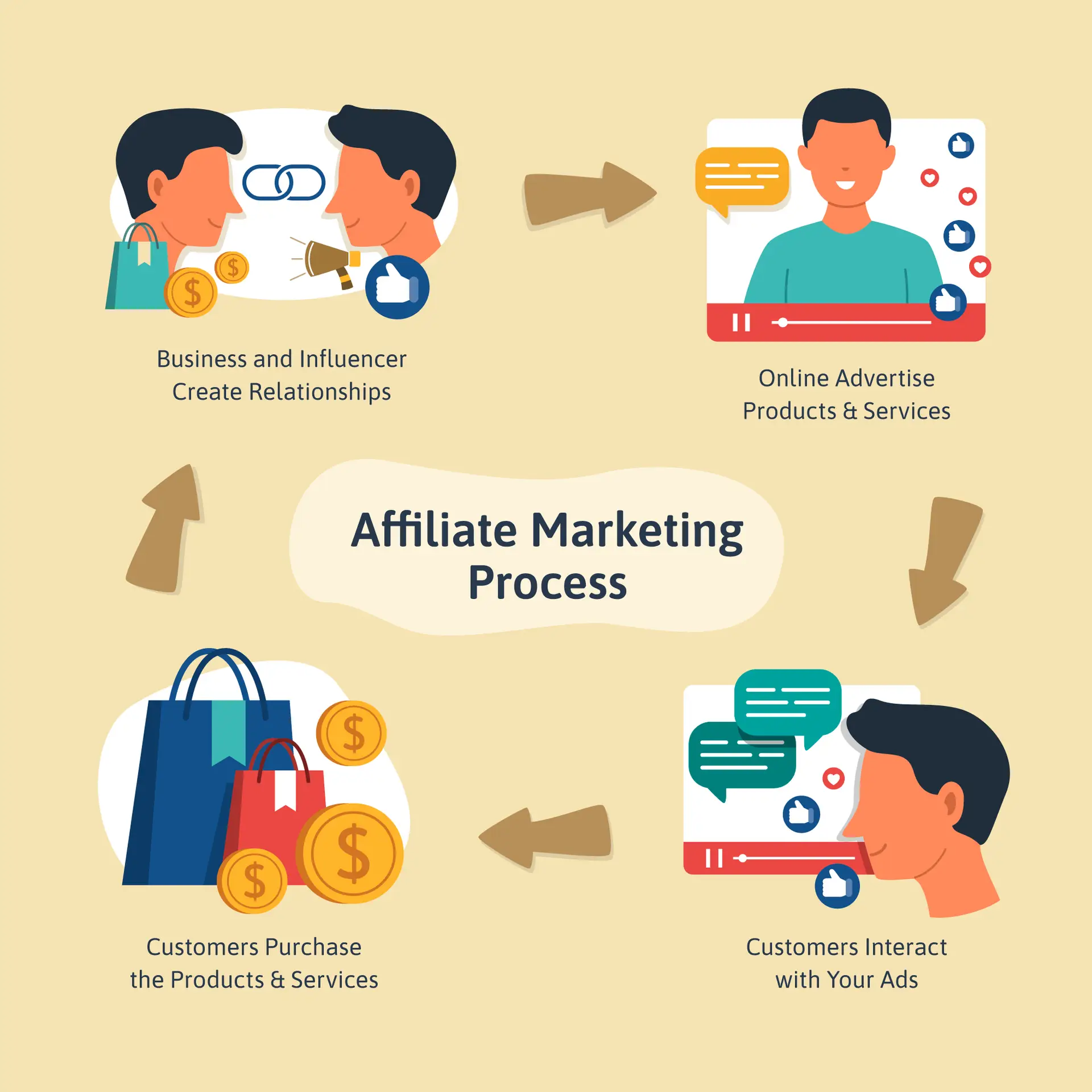Affiliate marketing has become an enticing avenue for budding entrepreneurs and marketers aiming to create passive income streams. This performance-based model offers the dual allure of minimal initial investment and scalable earning potential. However, while the barriers to entry are low, achieving success in affiliate marketing requires strategic planning, dedication, and continuous learning. This comprehensive guide will explore the key steps to start your affiliate marketing business and set yourself up for long-term success.
Understanding Affiliate Marketing
Affiliate marketing is performance-based marketing where a business rewards affiliates for each customer brought in through the affiliate’s marketing efforts. Affiliates promote products or services and are compensated through a percentage of the sale, a fixed fee, or other incentives. The process typically involves four parties:
- Merchants: These are the product creators or sellers.
- Affiliates: These promoters market the products in exchange for commissions.
- Consumers: The individuals who end up purchasing the product.
- Networks: Though not mandatory, these platforms connect merchants and affiliates and manage offers, tracking, and payments.
Step-by-Step Guide to Starting Your Affiliate Marketing Business
1. Identify Your Niche
Selecting a niche is crucial as it defines your target audience and frames your marketing efforts. Consider the following when choosing a niche:
- Passion and Interest: Opt for an area you are passionate about; your enthusiasm will fuel your content and marketing efforts.
- Market Demand: Ensure substantial interest and demand within your chosen niche.
- Competition Analysis: Analyze the competition to establish if the market is saturated or if there’s a gap you can fill.
Some popular niches include health and wellness, personal finance, beauty, technology, and lifestyle. Tools like Google Trends and keyword research can provide insight into market demand and competition.
2. Research and Join Affiliate Programs
Once you’ve identified your niche, research relevant affiliate programs. There are two primary types:
- High-paying, low-volume: Offers high commissions, but the sales are fewer.
- Low-paying, high-volume: These require significant volume to earn substantial commissions.
Look for affiliate programs that align with your niche. Some reputable networks include:
- Amazon Associates: A popular option with a vast range of products.
- ShareASale: Known for its versatile offerings and user-friendly interface.
- ClickBank: Famous for digital products, often with high commission rates.
- CJ Affiliate: A robust network with well-known brands.
Sign up for multiple programs to diversify your income streams, but ensure they are reputable and provide adequate support.
3. Build Your Platform
Your platform is where you’ll attract and engage your audience. Options include:
- Blog or Website: A versatile platform for long-form content, reviews, and educational material.
- YouTube Channel: Ideal for video reviews and tutorials.
- Social Media: Platforms like Instagram or TikTok are popular for niches like fashion or lifestyle.
Setting Up a Blog or Website
- Domain Name: Choose a catchy, brandable domain name relevant to your niche.
- Hosting: Opt for reliable hosting services; companies like Bluehost or SiteGround offer good starting packages.
- Content Management System (CMS): WordPress is famous for its flexibility and ease of use.
Website Essentials:
- Home Page: Convey your value proposition.
- Blog Section: Regular blog posts to inform and engage your audience.
- About Page: Build trust by sharing your story.
- Contact Page: Provide a way for visitors to reach out.
- Disclosure and Privacy Policy: It is legally necessary to disclose your affiliate relationships.
4. Create Quality Content
Content is the cornerstone of affiliate marketing. Your content should:
- Educate and Inform: Create how-to guides, tutorials, and tips for your niche.
- Review Products: Honest reviews build trust and drive conversions.
- List Posts: Curated lists of relevant products or services can be highly engaging.
Incorporate affiliate links naturally within your content rather than overtly pushing products. Tools like Ahrefs or SEMrush can aid in keyword research and SEO optimization.
5. Drive Traffic
Driving traffic is essential for success in affiliate marketing. Techniques include:
- SEO (Search Engine Optimization): Optimize your content to rank higher on search engines. Focus on on-page (keyword usage, meta descriptions) and off-page factors (backlinks).
- Social Media Marketing: Engage and grow your audience on platforms relevant to your niche.
- Email Marketing: Build an email list to cultivate a loyal audience. Tools like Mailchimp can help manage and automate campaigns.
- PPC (Pay-Per-Click) Advertising: Invest in paid advertising on Google Ads, Facebook Ads, or other platforms to drive targeted traffic quickly.
6. Analyze and Optimize
Regularly evaluate your performance using tools like Google Analytics and affiliate dashboards. Pay attention to metrics such as:
- Traffic Sources: Understand where your audience is coming from.
- Conversion Rates: Gauge how well your clicking traffic is converting into sales.
- Top-Performing Content: Identify which content types drive the most affiliate sales.
Continuously refine your strategies based on these insights. A/B testing different elements of your marketing, such as headlines or call-to-action buttons, can provide more insights for ongoing optimization.
7. Maintain Compliance
Stay compliant with legal and network guidelines. Essential practices include:
- Disclosure: Transparently disclose your affiliate relationships within your content.
- Data Privacy: If applicable, adopt data privacy laws like GDPR or CCPA.
- Honest Marketing: Only promote products you believe in to maintain credibility.
Conclusion
Starting an affiliate marketing business requires strategic planning, persistent effort, and ongoing learning. Begin by identifying a niche that excites you, joining relevant affiliate programs, building a user-friendly platform, and focusing on creating high-quality content. Drive traffic through effective SEO, social media marketing, and email campaigns while continuously analyzing and optimizing your efforts.
By adhering to these steps and maintaining a genuine approach, you’ll be well on your way to building a successful affiliate marketing business that can generate sustainable income over time. Good luck!

